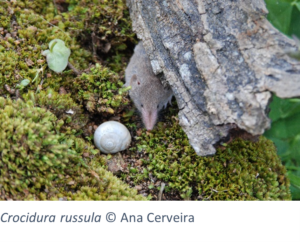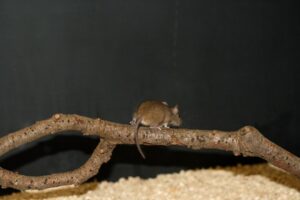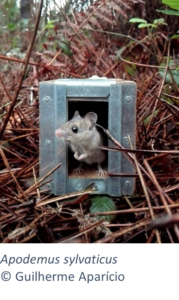Behaviour and Physiology of Small Mammals
 We are interested how species adjust to their environment. These environments can be the diverse conditions animals encounter in different climatic regions or the novel and variable habitats they face in cities.
We are interested how species adjust to their environment. These environments can be the diverse conditions animals encounter in different climatic regions or the novel and variable habitats they face in cities.
In one of our projects, we are studying the influence of different drivers of urbanisation, like light and sound pollution, on the behaviour and physiology of shrews and mice. We are also interested in animal vocalisation, where we analyse the twittering calls of shrews and the ultrasonic vocalisation of house mice.
To answer our questions, we use classic behavioural experimentation, the recording and analysis of acoustic data as well as the measurement of metabolic rates and hormonal levels. Most of our experimental work is done on wild-caught small mammals, which we bring into short-term captivity. To understand the influence of captivity on wild animals, we are currently analysing the adjustment of wild-caught mice to the laboratory environment. At this moment, our work is conducted mainly in Portugal, in collaboration with the University of Lisbon.
Research
- Impact of urbanization on small mammals
- Consequences of captivity on wild-caught small mammals
- Twittering of shrews
- Ultrasonic vocalisation of house mice, in collaboration with the Max Planck Institute for Evolutionary Biology
- Sustainability project at the University of Lisbon, Portugal: DOMUS – housing and getting to know the biodiversity of the Faculty of Sciences up close

Contact: sophie.xcdvwvonDZ1xcmerP.Gh@ten@pvw-WYlus.xcdvwac.atYAE47
Mus musculus © Christine Pfeifle





